5 Fundamentals of Successful Small Business Email Marketing You Need to Know (And How to Implement Them)
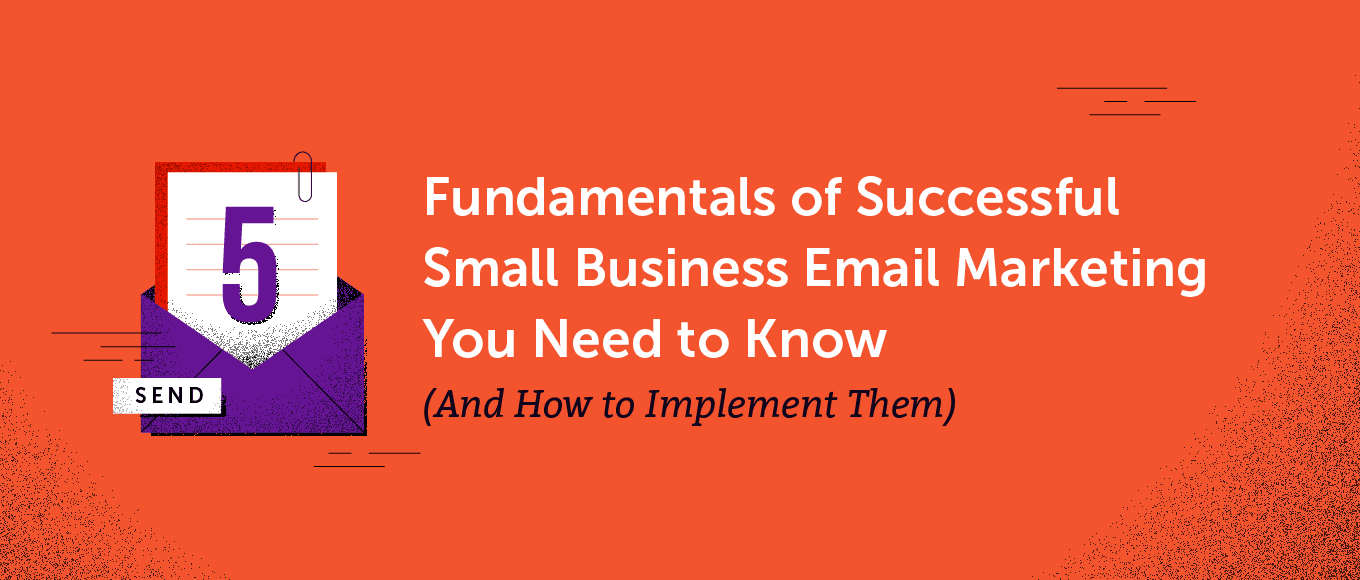 Email marketing is just as complicated as it is powerful.
According to the DMA, the ROI on email marketing is about $32 for each dollar spent. That’s the highest ROI of any marketing strategy by far.
There’s something about a well-done email that captivates audiences like almost no other form of marketing. Perhaps it’s the personalization or the directness. Or the fact that we anticipate it because a pre-existing interest had caused us to sign up in the first place.
Whatever that quality, it’s elusive – hard to pinpoint and even harder to capture. But it’s very real.
For a small business, email marketing is a chance to grow a loyal customer base through very direct interaction. It’s a way to build relationships – an adept email campaign should feel like a conversation between a customer and the brand.
Nailing email marketing takes effort. You can’t just send any old email and wait for the revenue to pour in. (Not to mention, you must first acquire emails and there are very specific ways to do that as well.)
Nonetheless, small businesses and solopreneurs will find that email marketing is a potent means to generate sales and grow their business.
Here’s everything you need to know to get started with small business email marketing, plus plenty of resources along the way to point you in the direction of success.
Email marketing is just as complicated as it is powerful.
According to the DMA, the ROI on email marketing is about $32 for each dollar spent. That’s the highest ROI of any marketing strategy by far.
There’s something about a well-done email that captivates audiences like almost no other form of marketing. Perhaps it’s the personalization or the directness. Or the fact that we anticipate it because a pre-existing interest had caused us to sign up in the first place.
Whatever that quality, it’s elusive – hard to pinpoint and even harder to capture. But it’s very real.
For a small business, email marketing is a chance to grow a loyal customer base through very direct interaction. It’s a way to build relationships – an adept email campaign should feel like a conversation between a customer and the brand.
Nailing email marketing takes effort. You can’t just send any old email and wait for the revenue to pour in. (Not to mention, you must first acquire emails and there are very specific ways to do that as well.)
Nonetheless, small businesses and solopreneurs will find that email marketing is a potent means to generate sales and grow their business.
Here’s everything you need to know to get started with small business email marketing, plus plenty of resources along the way to point you in the direction of success.
Download Your Email Marketing Calendar Template
Planning your email content ahead of time is crucial for success. The best way to do this and keep organized is with an email calendar. Create yours the easy way with this downloadable template:1. Start Building Your Email List Early
One of the biggest mistakes that many SMBs make with email marketing is not getting started with building the email list early enough. People provide their emails to brands they know and trust – it takes time to develop the consumer relationship only that far. Get started building your email list as soon as you can with your business. Here are some tactics (and a few more) that you can try:- Use CTAs (call-to-action) on your blog posts. Encourage people to sign up to learn more about what they just read.
- Create targeted landing pages. Cater each landing page to a different segment of your target audience. That will improve your email list’s relevance to subscribers, rather than a generic landing page which doesn’t quite seem to speak directly to the reader.
- Offer something valuable. A common strategy involves offering a free ebook or other relevant and contextual pieces of content to complement what you’ve already published.
- Spread the word. Let people know you have a newsletter and give them a link to sign up by posting about it on social media. It works!
- Use banners or signup boxes on your home page. A non-intrusive signup form or banner gives readers the option to sign up without getting in the way of their perusal.
 Medium puts a signup banner halfway down its front page after the reader has already had a moment to get interested in its featured posts. Source: Medium.
Medium puts a signup banner halfway down its front page after the reader has already had a moment to get interested in its featured posts. Source: Medium.
2. Pick Your Email Types to Send
Once you’ve started capturing emails, it’s time to start considering what sort of emails you want to send. Depending on your target audience and your product or service, a few different options exist that you should consider.Email Newsletters
Email newsletters are super common, effective and fun. They’re a great way to let subscribers know about your latest updates, sales, special announcements, or interesting pieces of content. Many people also approach them like digital magazines, curating the very best and most interesting content in a weekly or monthly edition. Email newsletters are a chance to get creative. We’ve curated a few ideas to get your inspiration flowing.Drip Campaigns
A drip campaign is a series of emails automatically sent to a recipient. They’re usually triggered by a specific action, such as a signup or a transaction. Drip emails serve to keep a brand at the front of a subscriber’s mind and extend the sales funnel without it seeming like you’re trying to sell something. To get started on writing an utterly irresistible drip campaign, check out this guide. A drip campaign looks roughly like this: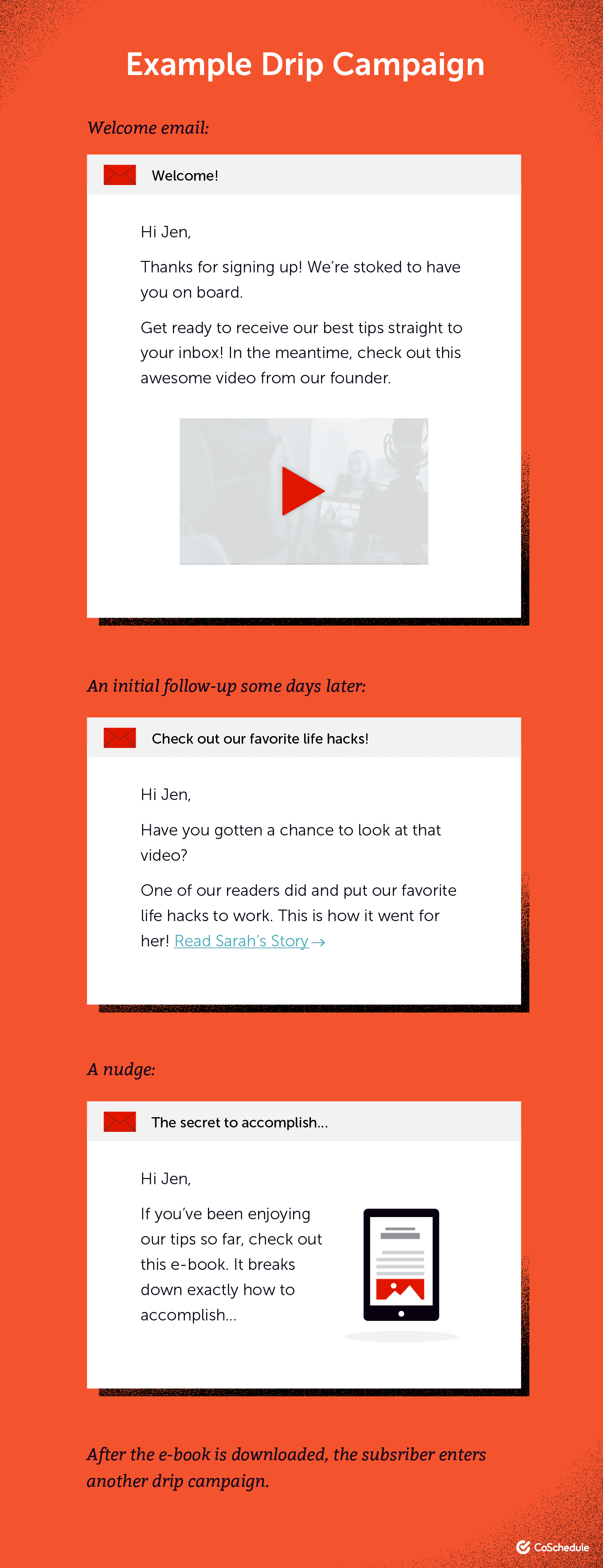
Dedicated Sends
A dedicated send email is one sent to a specific segment of your subscribers. They’re a powerful way to more personally target demographics within your target audience to drive conversions. Some segments within your email list that you should consider targeting include:- Loyal, repeat customers. Show them extra love because they keep coming back! Shower them with coupons, exclusive offerings, and inside looks that others don’t get to see.
- Anniversaries or birthdays. Has someone been a customer for one year? Five years? Let them know and show your appreciation.
- Lurkers and ghosts. Lure inactive customers back to your business by targeting them with a thoughtful email.
- Local customers. Got local subscribers? Remind them that they can come visit you, too!
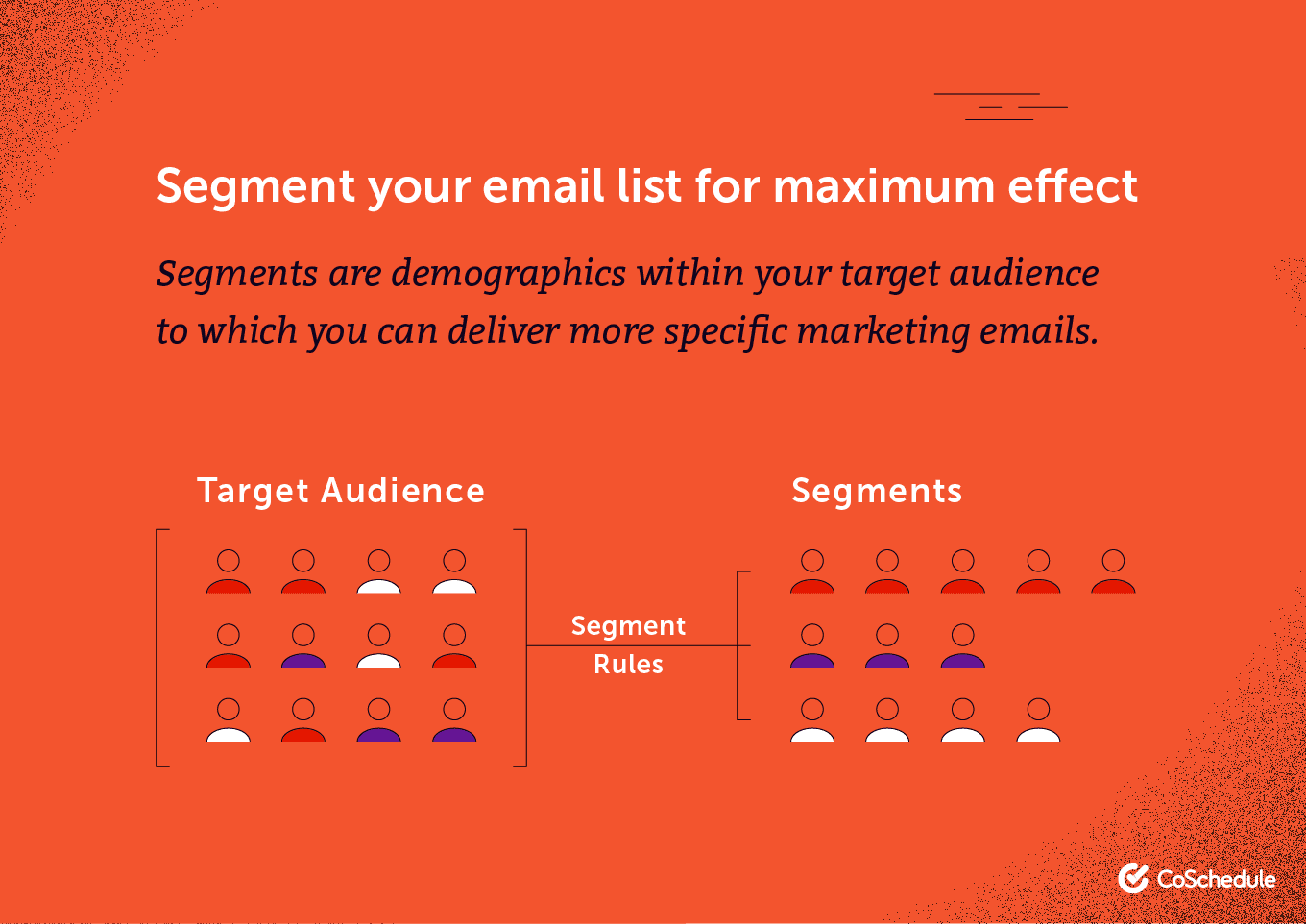
Promotional Emails
Small business email marketing is a great way to increase awareness of all your latest offerings. It might thus be tempting to blast your email list every time you’ve got a new product. Send promotional emails carefully. While it’s important to keep your subscribers in the loop, emails full of product links can annoy subscribers and come off as spammy if you aren’t also providing valuable content. Choose promotional emails when you have things like a yearly annual sale or a truly game-changing product release.Transactional Emails
Using transactional emails to keep customers in the loop about their purchases or signups is an email marketing best practice. These get some of the highest open rates because people are expecting them, and they contain information that people need. Take advantage of them in your SMB email marketing strategy. Research shows that they can generate up to six times more revenue than other types of emails. Delta uses its transactional emails to deliver more content, as well as make it easy for customers to book their next flight. Source: Really Good Emails.
Delta uses its transactional emails to deliver more content, as well as make it easy for customers to book their next flight. Source: Really Good Emails.
3. Create Amazing Emails That People Want to Read
Are you brimming with ideas yet? Fantastic! Your next step is to transform all those amazing ideas into stunning emails that people get excited about whenever they see you pop into their inbox. However, don’t just go hammering out whatever words come to mind. To have the greatest effect, you’ll need to polish your email copywriting game. Before you get started, we recommend that you:- Read up on what makes a great email. We’ve got an entire process for it.
- Use an email template. These are tried-and-true. They’ll make your life easier.
- Leverage free writing tools. Grammarly and HemingwayApp can help you deliver flawless copy.
- Use our email subject line tester. It will let you know right away if you’ve got a killer, click-worthy subject line.
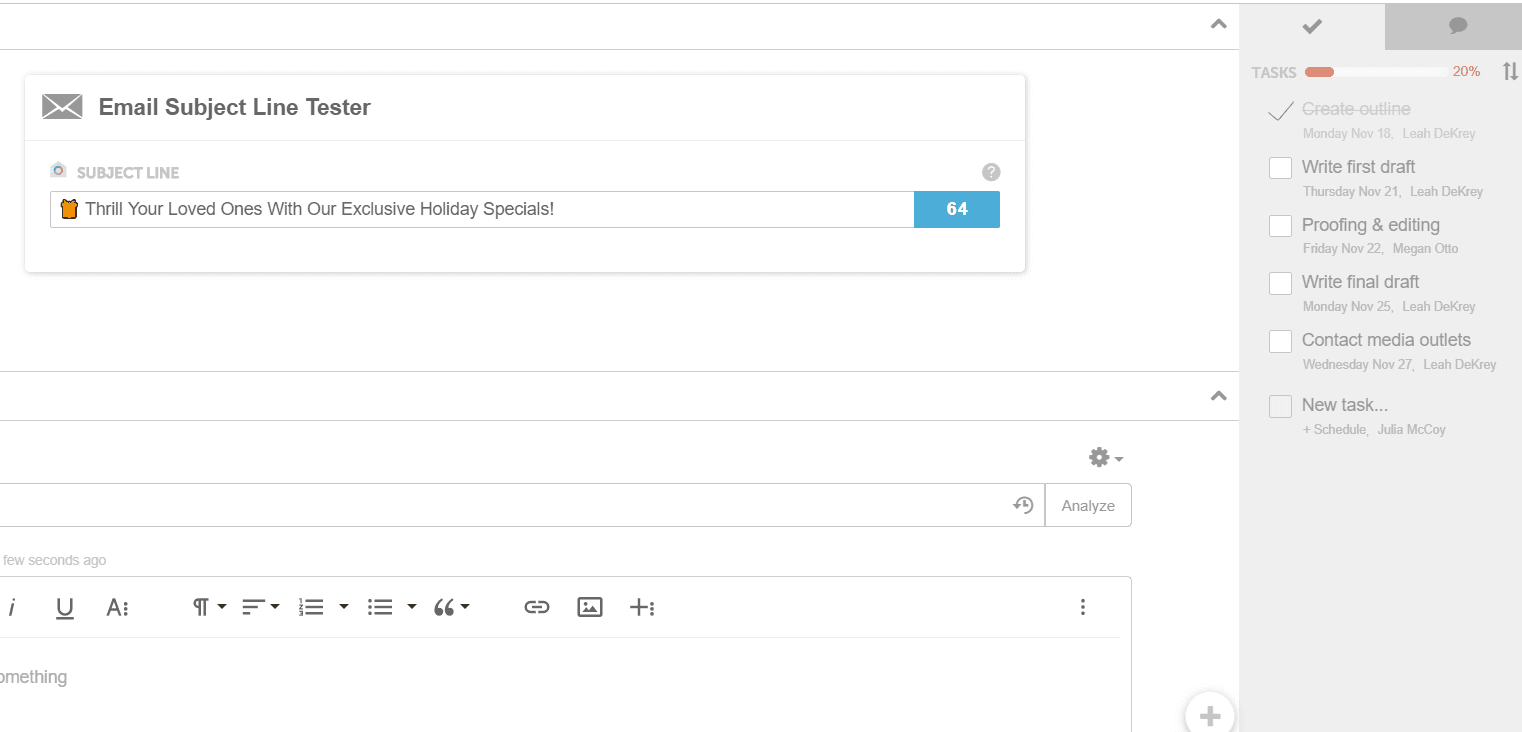
Email Service Providers
By the way, have you decided what service you’re going to use to send your emails? An ESP can provide many beautiful templates, helpful tips, and the email server power that you need to blast hundreds if not thousands of emails at once. CoSchedule integrates with the following:- MailChimp
- Campaign Monitor
- Active Campaign
- Constant Contact
4. Establish Your Schedule … and Stick to It
We’ve said it so many times before: consistency is key. Unless you’re using drip campaigns that are triggered by user actions, you’ll need to develop a schedule for when your newsletters, sales announcements, or dedicated sends go out. Doing so keeps you consistent, and helps you stay focused on your next task. However, how often should you be sending out those marketing emails? We compiled information from 20 different studies. Here’s what we found:- Customers generally want to hear from you more than once a month. However, complaints rise sharply after more than a few times per week.
- B2B emails are preferred less frequently – but they still want to hear from you at least once a month.
- Tuesdays are the best day to send emails, and Thursdays are the second best. By Tuesday, people have had a chance to go through their weekend email backlog.
- The best times of the day to send emails are 6 am, 10 am, 2 pm, then between 8 pm and midnight. Those times roughly correlate to morning break (or lunch), afternoon break, and when you’re laying in bed on your phone.
- It’s good to experiment. Your brand and target audience might find that other times or frequencies are better altogether.
 Use CoSchedule to organize entire campaigns or plan one-off emails in a schedule.
Use CoSchedule to organize entire campaigns or plan one-off emails in a schedule.
5. Analyze Your Performance to Grow
Use email marketing analytics to see how your campaigns are doing. By tracking these, you’ll quickly spot problems or opportunities to tweak your emails. Metrics also make it easier to A/B test emails (or send out different versions to see which one gets better results). There are a bunch of different types of metrics that you could follow, depending on your business. For SMB email marketing, however, these eight are usually the most useful:- Open rate. That’s the number of emails opened divided by the number of emails sent, minus the number of bounced emails.
- Click-through-rate. That’s the number of times links were clicked compared to emails that were opened.
- Conversion rate. Conversions are your sales compared to the number of emails sent.
- Referral traffic. This number is the total site visits you got from your email.
- Bounce rate. Undeliverable emails are “bounced” and measured against the number of emails sent.
- Unsubscribe rate. Divide your unsubscribe requests by the number of emails sent.
- List growth rate. That’s the percentage of old subscribers divided by new ones – or how fast your list is growing.
It's Time to Get Started With Email Marketing for Your Small Business
There are some 3.9 billion email users out there receiving 293 billion emails every day. When you’re working with numbers that big, it’s no wonder that email marketing seems like a somewhat labyrinthine topic. For a small business, email marketing is a powerful tool that can result in an impressive ROI. We’ve broken down the fundamentals to help you get started. Need more? Check out our best tips for organizing an effective email campaign strategy.5 Fundamentals of Successful Small Business Email Marketing You Need to Know (And How to Implement Them)
Click To TweetEmail Is Just One Piece Of The Marketing Puzzle
Small businesses typically have limited time & resources to dedicate to their marketing. But successful marketing is key to your growth. Actionable Marketing Institute’s Marketing Basics Bootcamp focuses on teaching small business marketers the skills, tactics, & strategies that focus on driving results.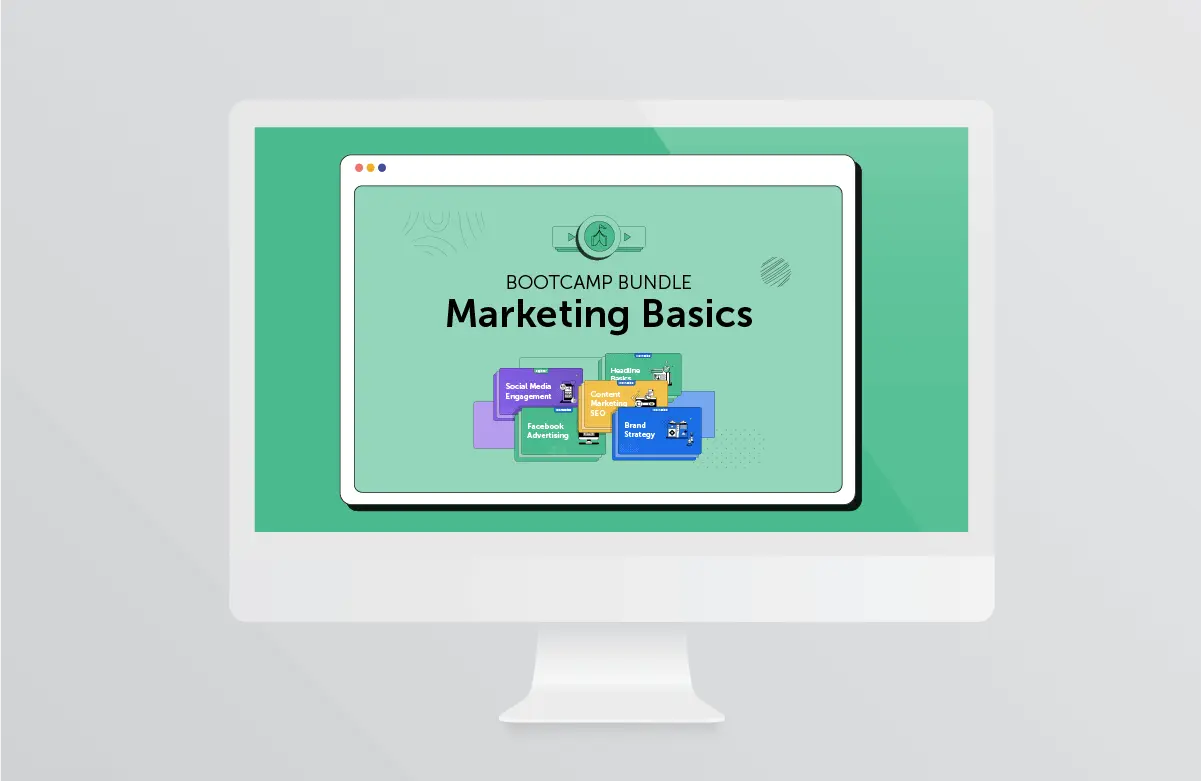 This 8-course marketing Bootcamp features 48 video tutorials & 34 templates you can use to improve your marketing from the first lesson.
Today, blog readers can enroll for only $59 (over 60% off!) with code EMAILS at checkout.
Learn the key marketing skills you need to execute results-driven marketing for your small business, so you can spend more time managing the things you do best: your business.
This 8-course marketing Bootcamp features 48 video tutorials & 34 templates you can use to improve your marketing from the first lesson.
Today, blog readers can enroll for only $59 (over 60% off!) with code EMAILS at checkout.
Learn the key marketing skills you need to execute results-driven marketing for your small business, so you can spend more time managing the things you do best: your business.

